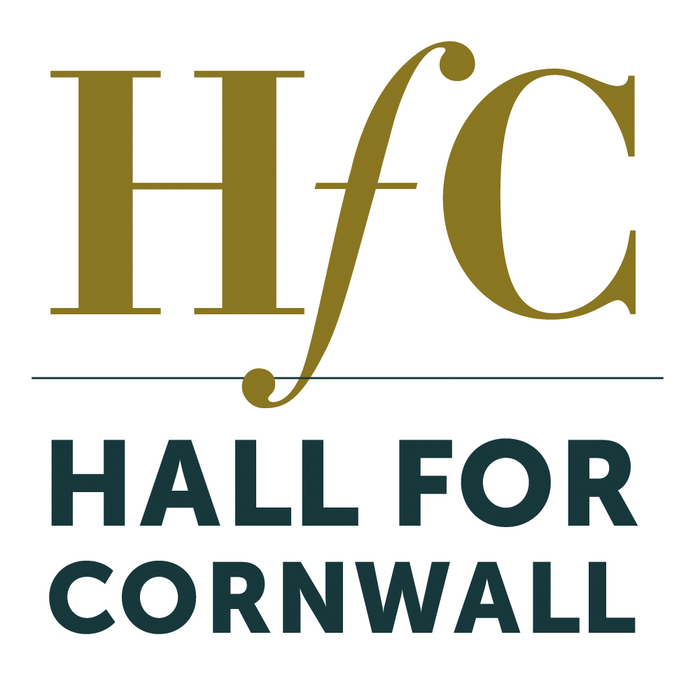
ALEX LAIDLAW
FRONT OF HOUSE MANAGER
What are the main qualities needed to do your job?
Strong interpersonal skills are vital as I interact with lots of different people. Organisational and strong communication skills are equally important and being
calm under pressure.
What drew you to live and work in Cornwall?
I was born in Cornwall and lived here until I went to university in 2006. I’ve lived in the South East and South West London until 2020, when I returned to Cornwall due to the pandemic. Whilst I didn’t intend to stay, I realised it’s such a lovely place. In spring 2021 I successfully applied for a job at HfC. I can now be on a beach one day and in a beautiful theatre the next, so it’s the perfect balance.

Why did you want to work in theatre?
I’ve loved the theatre since I was five after seeing Pinocchio at the Lane Theatre, Newquay. I never thought of it as a serious career though. After university, I worked in Human Resources, but in 2014 I applied to be a casual Front of House Assistant at the New Theatre, Oxford. I loved the job. And when I saw what the Front of House Managers did, it’s a role I wanted to do. I was promoted to casual Supervisor and then moved into a full-time position at Richmond Theatre, London. It’s the best career decision I’ve made as it’s such an exciting industry.
Describe the benefits of the newly refurbished theatre?
The seating options are fantastic, especially the slips, which are available on all levels. They’re perfect for single theatre goers as you can get to/ from your seat without disturbing others. Accessibility within the auditorium is fantastic and 11 wheelchair accessible spaces in the stalls is unique. The contrast of the Playhouse Bar and Greenroom Café is also a huge benefit. The spaces are so versatile, which means we can host different events.

What’s your biggest HfC highlight to date?
Our first annual volunteer refresher training in August 2022. It was a lovely atmosphere and great to see so many volunteers return with such enthusiasm.

What gives you the greatest job satisfaction?
It’s always great to see new people join us and then flourish in their roles. It’s very rewarding.
What’s the toughest challenge you’ve faced in your role?
Earlier this year, I handled several medical incidents, both physical and mental health related. They were on a scale I hadn’t experienced before, so my first aid skills were tested. It was a great learning curve.
What’s the best show you’ve seen at Hall for Cornwall since working there?
Titanic The Musical was by far the best show I’ve seen. I loved the lyrics and choral music and the simple, but effective staging. Seeing Dionne Warwick on stage in 2022 is also something I will never forget – she had a wonderful stage presence.

Photo by Pamela Raith Photography
Who’s been the most influential person in your working life?
My current line manager, Polly Dent. She’s the most experienced manager I’ve ever had, and I’ve learnt from her. She’d previously supported young people from challenging backgrounds at Fifteen, Cornwall. I’ve learnt a great deal about people management which I’m grateful to her for.

Polly Dent
What’s your favourite place in Cornwall and why?
It’s difficult to pick one as I have lots of favourite places. I recently went to Durgan Beach, near Falmouth – it was incredibly peaceful. I love Trelissick, just outside Truro too. It has good woodland walks followed by tea and scones afterwards (jam first, of course).
What’s your favourite café or restaurant in Cornwall?
I love a Sunday carvery and often visit The Copper Coast in Pool. Charlotte’s Tea House in Truro is also a favourite.
What constitutes a great day out in Cornwall for you?
As a National Trust member, their sites are a perfect day out. Lanhydrock near Bodmin is a favourite, as well as Cotehele, outside Saltash.
What are you reading at the moment?
I’m reading The Kilt. I recently started compiling my family tree and this book was written by a distant cousin of mine about our family history. It’s been fascinating learning about my Scottish ancestors.
What music are you currently listening to?
My Spotify playlist is varied, but I’m currently listening to musical theatre cast recordings. I like great female singers such as Celine Dion and Barbra Streisand.
What’s the best Netflix/ TV series you’ve watched recently?
It’s not recent, but my favourite by far is Line of Duty – I loved its twists and turns. My favourite character is DCS Patricia Carmichael, played by Anna Maxwell Martin. I have everything crossed for Series 7.
What’s the most important piece of advice you have received in your career?
You can’t personally welcome every customer into the theatre. Instead, nurture and care for your team as much as you can, and they’ll do this for you and your customers. Great advice.
What advice would you give to a young person who wanted to work in theatre?
Be persistent. Aim to get as much experience as you can in your area of interest. And enjoy learning and getting to the position you eventually want to be in.

Photos by Hugh Hastings











































